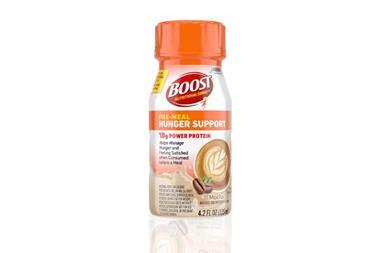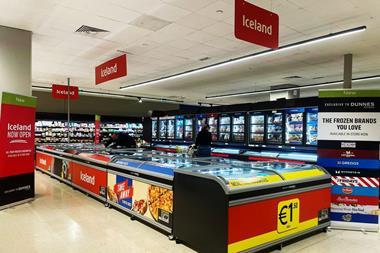Obese people have cut down on the products usually vilified for causing weight problems. What is to blame asks Siân Harrington
The argument that impulse snacks like confectionery are to blame for the shocking rise in obesity is seriously flawed, according to research by independent market information company TNS.
Obese people are, in fact, likely to eat less chocolate than those of ideal weight as they view it as a low-satiation discretionary treat. However, they over-index on products like pizza, burgers or takeaways, which they perceive as a snack rather than a meal.
Over 1,000 members of TNS’ Family Food Panel provided height and weight to calculate body mass index, the established measurement for obesity. TNS then compared those that were underweight, ideal weight, overweight and obese with their food and drink consumption patterns over the past two years.
The results contradict much of the spin being put out by pressure groups, which have attempted to lay blame for the growth in obesity at the feet of companies such as Cadbury and Walkers.
Obese people have, in fact, cut down on many foods strongly associated with being fattening, such as chocolate, sweets, biscuits and crisps, and eat these foods less frequently than other convenience foods.
But they are eating more frequently than people of ideal weight and have increased their intake in comparison to previous years. However, while more people of all weights claim to be on a diet, the underlying eating patterns of obese people have not changed.
According to Giles Quick, divisional MD at TNS, society’s calorific intake has declined over the last 20 years, but people have become sedentary. “Although government is shying away from this inescapable truth, lack of exercise plays a very strong part in the growth of obesity. This is more to blame than calories consumed.”
Meanwhile, those of ideal weight and the overweight are responding faster to health messages than the obese. “Obese people are not turned on by them,” adds Quick. “Government needs to look at convenient, practical solutions. Obese people are primarily driven by convenience.”
The importance of focusing strategy on reducing obesity in children is borne out by the research. While 90% of kids aged 9-16 are aware of the 5-a-day message compared to 40% of adults, they continue to be at risk. Obese children eat hot savoury meals more frequently than those of ideal weight and consume fresh and chilled foods less frequently, and their perception of a snack is significantly different.
“Children’s diets are potentially bad, with lots of convenient processed foods,” says Quick. “When it comes to children, the balance shifts, with food more to blame than exercise.”
The argument that impulse snacks like confectionery are to blame for the shocking rise in obesity is seriously flawed, according to research by independent market information company TNS.
Obese people are, in fact, likely to eat less chocolate than those of ideal weight as they view it as a low-satiation discretionary treat. However, they over-index on products like pizza, burgers or takeaways, which they perceive as a snack rather than a meal.
Over 1,000 members of TNS’ Family Food Panel provided height and weight to calculate body mass index, the established measurement for obesity. TNS then compared those that were underweight, ideal weight, overweight and obese with their food and drink consumption patterns over the past two years.
The results contradict much of the spin being put out by pressure groups, which have attempted to lay blame for the growth in obesity at the feet of companies such as Cadbury and Walkers.
Obese people have, in fact, cut down on many foods strongly associated with being fattening, such as chocolate, sweets, biscuits and crisps, and eat these foods less frequently than other convenience foods.
But they are eating more frequently than people of ideal weight and have increased their intake in comparison to previous years. However, while more people of all weights claim to be on a diet, the underlying eating patterns of obese people have not changed.
According to Giles Quick, divisional MD at TNS, society’s calorific intake has declined over the last 20 years, but people have become sedentary. “Although government is shying away from this inescapable truth, lack of exercise plays a very strong part in the growth of obesity. This is more to blame than calories consumed.”
Meanwhile, those of ideal weight and the overweight are responding faster to health messages than the obese. “Obese people are not turned on by them,” adds Quick. “Government needs to look at convenient, practical solutions. Obese people are primarily driven by convenience.”
The importance of focusing strategy on reducing obesity in children is borne out by the research. While 90% of kids aged 9-16 are aware of the 5-a-day message compared to 40% of adults, they continue to be at risk. Obese children eat hot savoury meals more frequently than those of ideal weight and consume fresh and chilled foods less frequently, and their perception of a snack is significantly different.
“Children’s diets are potentially bad, with lots of convenient processed foods,” says Quick. “When it comes to children, the balance shifts, with food more to blame than exercise.”



















No comments yet